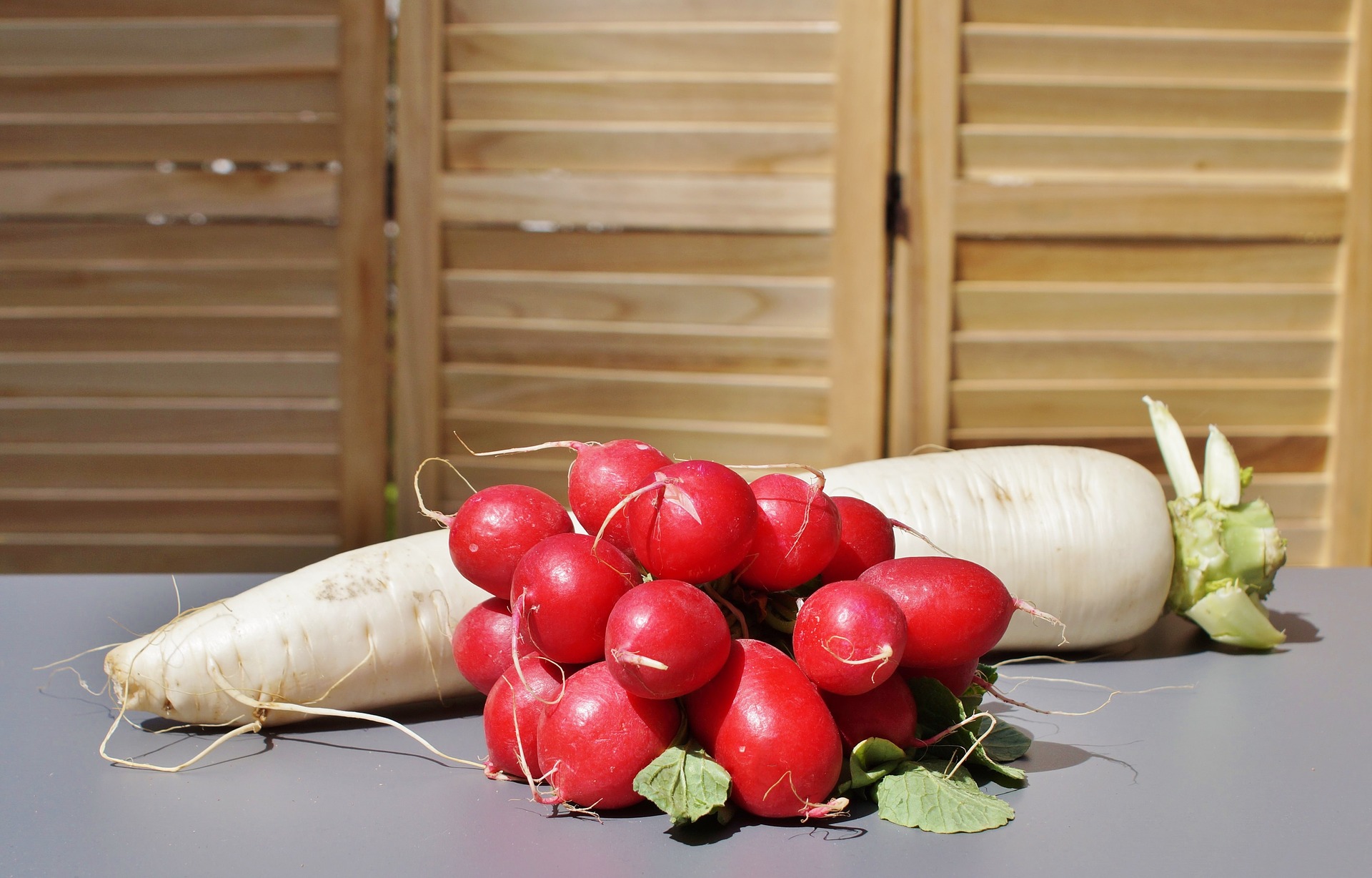They certainly look nothing alike. Let’s see what the difference is between radishes and daikon radishes.
- Radish: the crisp, pungent, edible root of the plant Raphanus sativus, of the mustard family, usually eaten raw.
- Daikon radish: a large, elongated, white winter radish, Raphanus sativus longipinnatus, used especially in Asian cuisine and sometimes pickled.
Radishes:
- Are a dark red in color.
- Are a cool season vegetable that matures rapidly.
- Are often eaten raw.
- Have a pungent, peppery flavor.
- Can be stored for over a week.
- Are native to Europe.
Daikon radishes:
- Are white in color.
- Are grown during the winter, taking a long time to mature.
- Are often pickled, as in kimchi.
- Have a sweet, mild taste.
- Don’t store well.
- Are native to Japan.
And guess what?
You can substitute one for another in recipes, just keeping in mind daikon radishes aren’t as “hot.” The Food Substitutions Bible groups all types of radishes in together, mentioning that turnips or parsnips can be subbed out.
In conclusion, radishes (as we know them) have a strong peppery flavor and are easy to grow and store. Daikon radishes have a milder flavor, and are a bit more work to grow and keep in the house.
